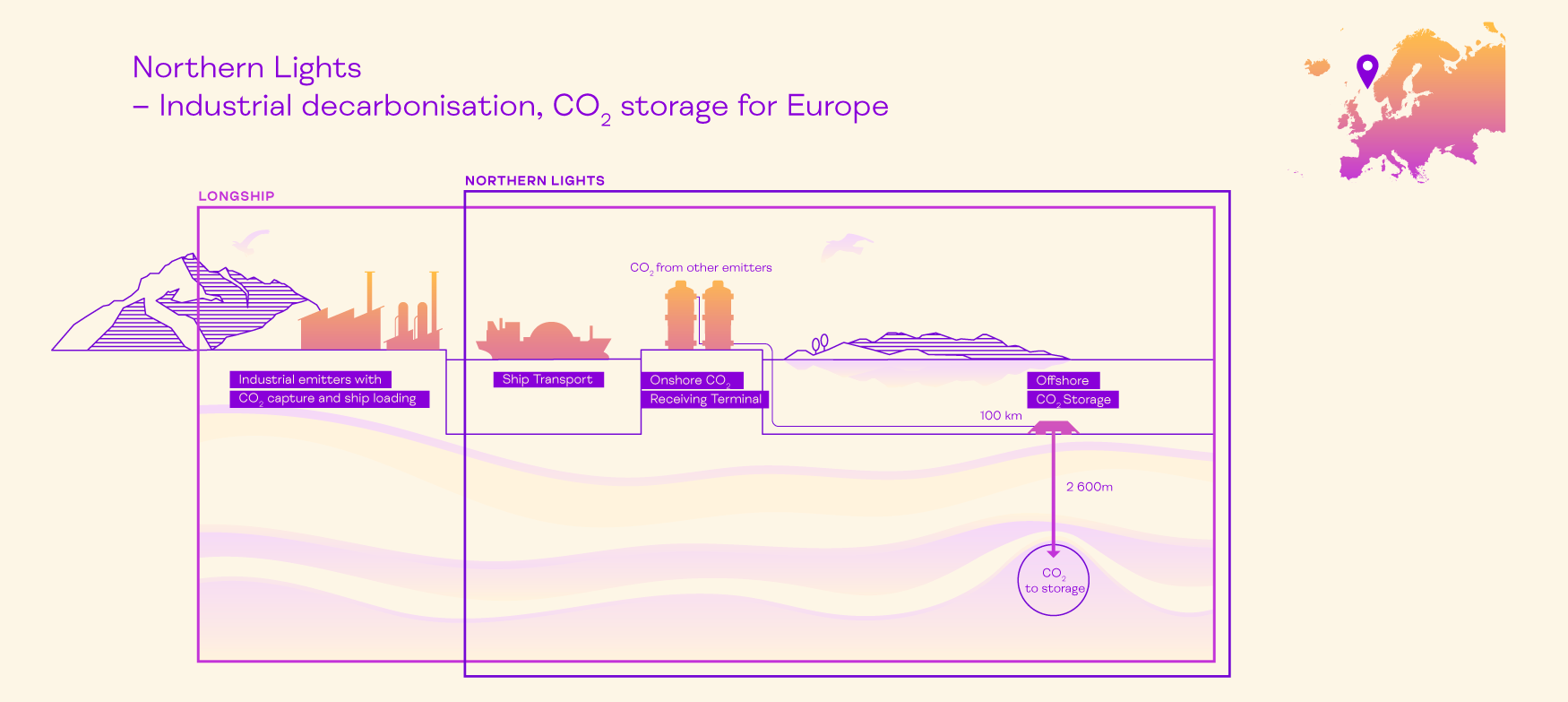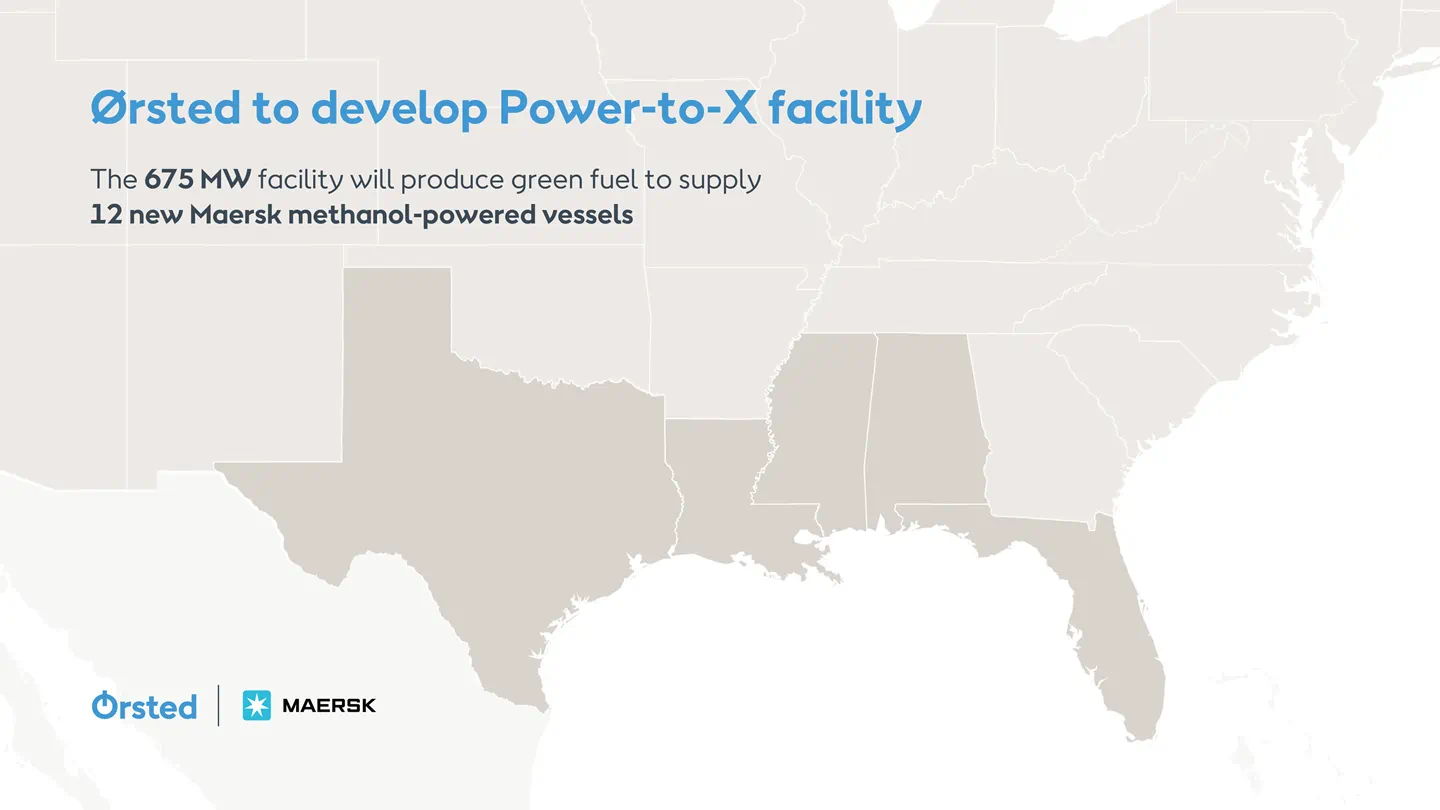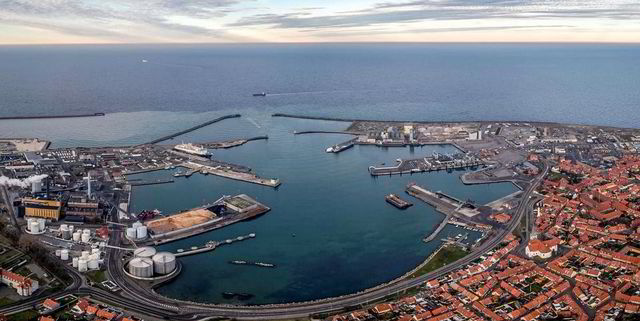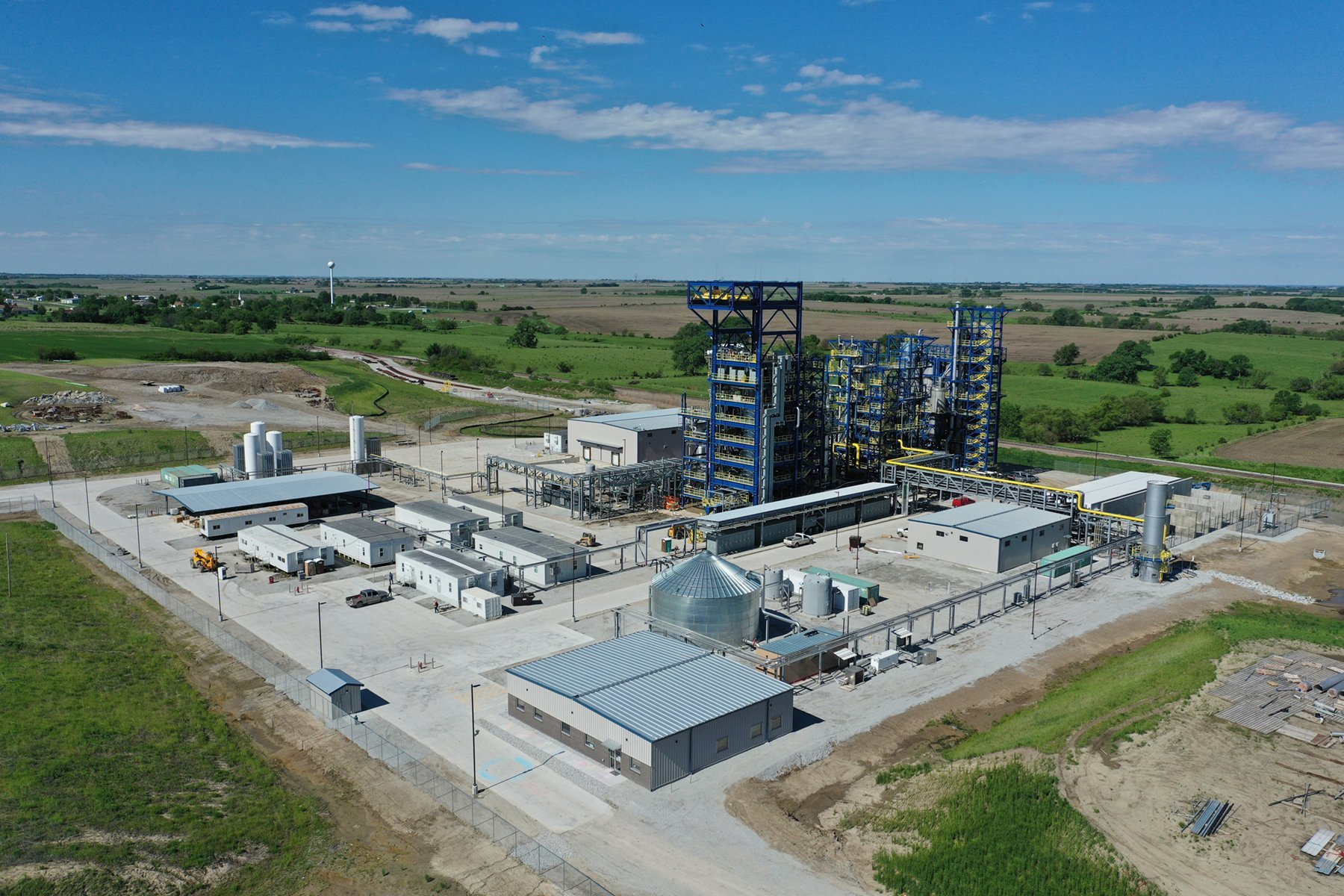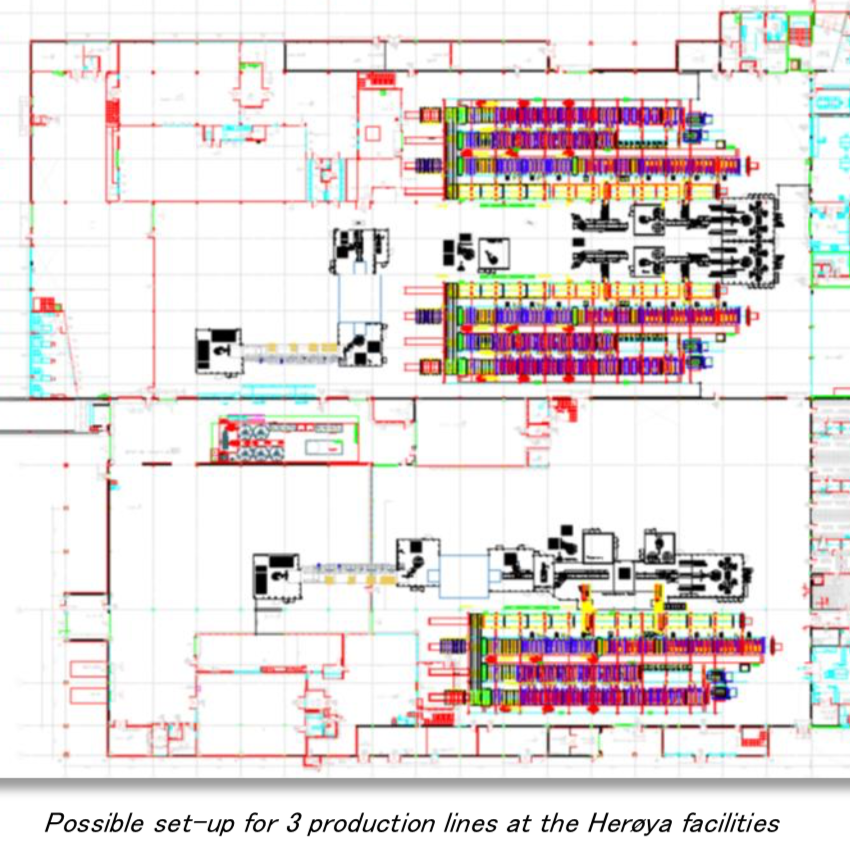Yara and Northern Lights have signed the world’s first commercial agreement for cross border CO2 transport and storage. Emissions from the Sluiskil production plant in the Netherlands will be captured, processed and transported for sequestration at the Northern Lights storage site off the coast of Norway. Yara is pursuing multiple decarbonisation options for the Sluiskil plant, including this CCS announcement, waste hydrogen, and offshore wind-to-hydrogen as part of Ørsted’s larger SeaH2Land project.
Content Related to Ørsted Wind Power
Article
Maersk secures its first complete e-fuel supply chain
Julian Atchison March 17, 2022
A.P. Moller - Maersk has entered into strategic partnerships with six organisations to secure the supply of at least 730,000 tonnes per year of green methanol fuel by 2025, which will fuel their future fleet of twelve methanol-fueled container ships. The announcement demonstrates a path forward for ramping up supply of alternative maritime fuels (including ammonia) by having a shipowner commit to complete off-take from a wide variety of partners & production projects, each of which is dramatically scaling-up output levels this decade.
Article
The Ammonia Wrap: green bunker fuel hub planned for the Baltic Sea
Julian Atchison June 15, 2021
News this week: future green bunker fuel hub planned for Bornholm, more Haldor Topsoe news, Australia partners up, 23 key players kick-off ammonia maritime fuel study, $100 billion hydro-hydrogen and ammonia in the DR Congo, Egypt planning $4 billion green hydrogen project, AP Ventures leads investment in Amogy, full steam ahead for MS Green Ammonia, new blue ammonia plant in Canada and new engineering contracts signed for key blue ammonia projects.
Article
The Ammonia Wrap: Ørsted's P2X vision for the North Sea, Gunvor's new sustainability commitments, the finance world backs green hydrogen and Hydrofuel-Ontario Tech's new partnership
Julian Atchison April 07, 2021
Welcome to the Ammonia Wrap: a summary of all the latest announcements, news items and publications about ammonia energy. This week: Ørsted unveils its P2X vision for the North Sea, energy trader Gunvor commits $500 million to sustainability, emissions reductions, finance world backs green hydrogen, Hydrofuel and Ontario Tech join forces and a new blue hydrogen/ammonia collaboration.
Article
United Nations Sparks Green Hydrogen Initiative
Stephen H. Crolius January 07, 2021
Last month UN Climate Change announced an initiative whose goal is to scale up green hydrogen production significantly over the next six years. “The new ‘Green Hydrogen Catapult’ initiative will see green hydrogen industry leaders, including ACWA Power, CWP Renewables, Envision, Iberdrola, Ørsted, Snam, and Yara, target the deployment of 25 gigawatts through 2026 of renewables-based hydrogen production, with a view to halve the current cost of hydrogen to below US$2 per kilogram.”
Article
Low-carbon ammonia in Nebraska and the Netherlands
Trevor Brown October 15, 2020
Last week, two new low-carbon ammonia production projects were announced, both of them large-scale and largely CO2-free. Monolith Materials announced a 275,000 ton per year “clean ammonia” plant in Nebraska, in the heart of the US cornbelt. The plant will begin construction in 2021, expanding the existing demonstration plant, using Monolith’s methane pyrolysis process powered by 100% renewable electricity. Ørsted and Yara announced their plan to produce 75,000 tons per year of “green ammonia” at Yara’s existing Sluiskil plant in the Netherlands. They intend to install a 100 MW electrolyzer, using Ørsted’s offshore wind energy, with a final investment decision expected in 2021-2022, and production beginning in 2024-2025.
Article
Maritime Ammonia: ready for demonstration
Trevor Brown May 07, 2020
At least four major maritime ammonia projects have been announced in the last few weeks, each of which aims to demonstrate an ammonia-fueled vessel operating at sea. In Norway, Color Fantasy, the world's largest RORO cruise liner, will pilot ammonia fuel. Across the broader Nordic region, the Global Maritime Forum has launched NoGAPS, a major consortium that aims to deploy "the world's first ammonia powered deep sea vessel" by 2025. In Japan, a new industry consortium has launched that goes beyond on-board ship technology to include "owning and operating the ships, supplying ammonia fuel and developing ammonia supply facilities." And the Ministry of Land, Infrastructure, Transport and Tourism (MLIT), which published its roadmap last month, aims to demonstrate ammonia fuel on "an actual ship from 2028" — specifically, a 80,000 dwt ammonia-fueled bulk carrier.
Article
Gigastack Phase 2 Receives Funding in the UK
Stephen H. Crolius February 20, 2020
Earlier this week the United Kingdom’s Department for Business, Energy & Industrial Strategy (BEIS) announced that a group led by ITM Power has been awarded GBP 7.5 million (USD $9.7 million) for the second phase of a renewable hydrogen project dubbed “Gigastack.” According to the BEIS announcement, “Gigastack will demonstrate the delivery of bulk, low-cost and zero-carbon hydrogen through ITM Power’s gigawatt scale polymer electrolyte membrane (PEM) electrolysers . . .” with the goal of “dramatically reduc[ing] the cost of electrolytic hydrogen.” The hydrogen produced will be used for petroleum refining, although the project partners have their eyes on opportunities that go well beyond desulfurization of oil.
Article
Gigawatt-scale electrolyzer manufacturing and deployment
Trevor Brown November 14, 2019
ANNUAL REVIEW 2019: Electrolyzers have featured heavily at this year's Ammonia Energy Conference, which ended today. How much can innovation increase efficiency? How far can volume manufacturing drive down capex? How much could process integration with Haber-Bosch deliver improved ammonia production? How realistically can new, sophisticated strategies optimize variable and baseload power inputs? These technical questions are all important, but none defines profitability. While progress is being made on all these fronts of research and development, major industrial projects are still moving forward.
Article
Green Ammonia Plants in Chile, Australia, New Zealand
Trevor Brown October 04, 2019
Green ammonia plants are being announced quicker than I can report. Here is a summary of four new projects that propose to use electrolyzers, fed by renewable power, to produce hydrogen for ammonia production. These are big companies, operating in regions with excellent renewable resources, making significant investments in their future. In Chile, it is Enaex, a major ammonium nitrate manufacturer, supplying explosives to the mining industry. In Australia, it is Incitec Pivot, "the second largest supplier of explosives products and services in the world," and Wesfarmers, "the largest Australian company by revenue," according to Wikipedia. In New Zealand, it is Ballance-Agri Nutrients, a big farmers' co-operative and the country's sole fertilizer producer. Each aims to make its business "future-proof." The transition from fossil ammonia to renewable ammonia is underway.
Article
Green ammonia: Haldor Topsoe's solid oxide electrolyzer
Trevor Brown March 29, 2019
Haldor Topsoe has greatly improved the near-term prospects for green ammonia by announcing a demonstration of its next-generation ammonia synthesis plant. This new technology uses a solid oxide electrolysis cell to make synthesis gas (hydrogen and nitrogen), which feeds Haldor Topsoe's existing technology: the Haber-Bosch plant. The product is ammonia, made from air, water, and renewable electricity. The "SOC4NH3" project was recently awarded funds from the Danish Energy Agency, allowing Haldor Topsoe to demonstrate the system with its academic partners, and to deliver a feasibility study for a small industrial-scale green ammonia pilot plant, which it hopes to build by 2025. There are two dimensions to this technology that make it so important: its credibility and its efficiency.
